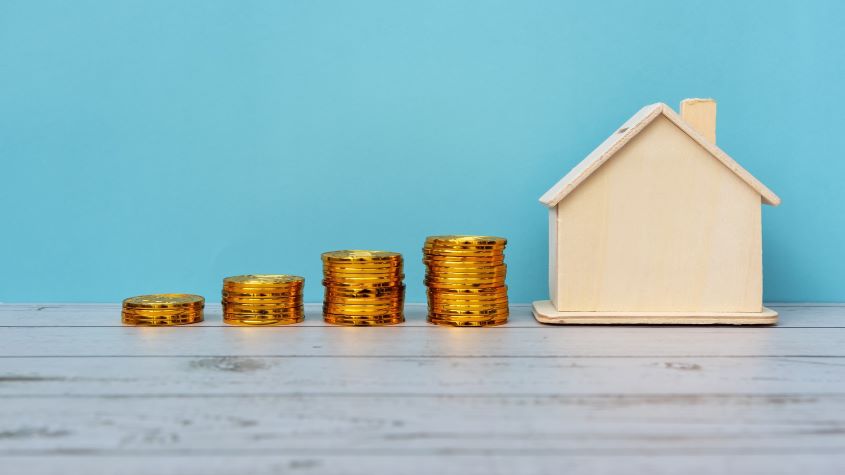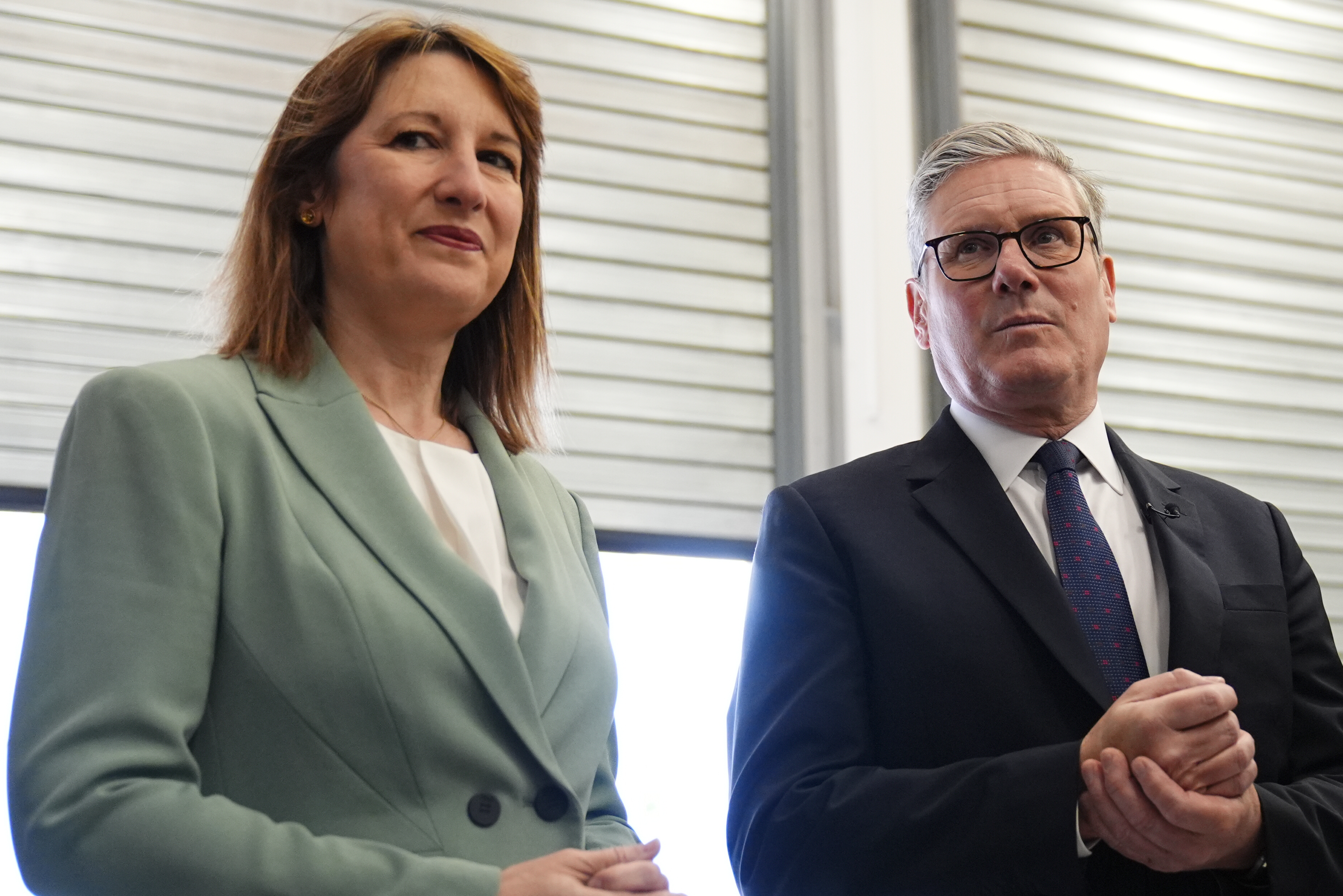Rightmove: UK house prices up £3,000 as property market rebounds
Rightmove’s latest house price index shows the property market has been resilient despite an economic downturn


The UK property market had a rocky start to 2023, but a rise in asking prices shows the sector remains resilient despite tough economic conditions. We look at what is happening to house prices now.
Online estate agent Rightmove’s latest house price index showed the average price of a property coming to the market was up 0.8%, or £2,906, in March, largely due to a jump in the price of large homes.
But this is slightly lower than the average monthly rise of 1% seen in March over the last 20 years as sellers take discounts on their properties.
MoneyWeek
Subscribe to MoneyWeek today and get your first six magazine issues absolutely FREE

Sign up to Money Morning
Don't miss the latest investment and personal finances news, market analysis, plus money-saving tips with our free twice-daily newsletter
Don't miss the latest investment and personal finances news, market analysis, plus money-saving tips with our free twice-daily newsletter
The average price of a property coming to the market is now £365,357.
The cooling effects of a high interest rate environment and the cost of living crisis are still reflected in the data. Annual house price growth has eased to 3% from 3.9% the month before, and new seller asking prices are now £5,800 below October’s peak as the market returns to its pre-pandemic activity levels.
Top-of-the-ladder homes boost average asking price
Larger, top-of-the-ladder homes boosted the average asking price thanks to a 1.2% monthly price jump, but sales for these larger homes were down 10% from the same period in 2019.
Second-stepper homes saw a more modest 0.4% rise in asking prices, but sales are down 13% from the same period in 2019.
Meanwhile first-time buyer type properties, those with two bedrooms and fewer, are taking longer to recover. Sales agreed are 4% behind the same period in 2019, and 18% behind last year’s peak.
Prices for these properties are down £500 from the peak. But affordability is stretched for first-time buyers struggling to save for deposits due to record-high rents, and mortgage rates remain far higher than they were two years ago, so this sector of the market could take longer to recover.
How have house prices changed regionally?
House prices are up in every region in the UK, except for London and the East of England where they are down 0.1% and 0.2% respectively. They are still 2.5% and 1.8% higher year-on-year.
The average price tag of a home in London is £680,806 and £415,836 in the east of England.
The North East saw the biggest monthly change, with prices jumping 2.5% from February and 4.7% year-on-year. The average home in the region costs £184,000.
Wales and the South West saw monthly increases of 2%, with the average homes costing £256,596 and £385,171 respectively.
The South East, East Midlands and the North West saw monthly price growth of 1.2%, 1.4% and 1.1% respectively. The West Midlands and Yorkshire and Humber saw more modest growth of 0.2% and 0.6% respectively.
Where will UK property prices go next?
The Office for Budget Responsibility (OBR) expects house prices will fall by 10% by 2024 due to low consumer confidence, the squeeze on real incomes due to inflation and the expectation of mortgage rate rises.
Other house price indexes believe the property market is headed for a downturn. The Royal Institution of Chartered Surveyors (RICS) reported new buyer demand remains depressed, and Nationwide reported house prices saw their biggest dip since 2012 last month.
But RICS also said the market appears to be stabilising, and the data from Rightmove is also encouraging. The housing market is turning out to be more resilient than previously thought despite several headwinds.
House prices rose rapidly throughout the pandemic, and the latest dips in prices seem to reflect a return to a normal pace of growth rather than an all out crash.
But plenty of uncertainty remains and prices could have much further to go.
Mortgage rates have begun to fall – currently the average rate for a 15% deposit five-year fixed mortgage is 4.65%, down from 4.75% last month and 5.89% in October, according to Rightmove’s calculations.
But this is still significantly higher than the 2.48% rates available this time last year.
“Lower mortgage rates may well be persuading more people to dip their toe back into the property market, which in turn could mean price falls aren’t as brutal as had been expected,” says Sarah Coles, head of personal finance at Hargreaves Lansdown.
“However, demand remains fragile, and given the uncertainty over the trajectory of the mortgage market, this is not a time to get carried away.”
Get the latest financial news, insights and expert analysis from our award-winning MoneyWeek team, to help you understand what really matters when it comes to your finances.
Nic studied for a BA in journalism at Cardiff University, and has an MA in magazine journalism from City University. She has previously worked for MoneyWeek.
-
 The most influential people of 2025
The most influential people of 2025Here are the most influential people of 2025, from New York's mayor-elect Zohran Mamdani to Japan’s Iron Lady Sanae Takaichi
-
 Millions of parents are missing out on up to £720 a year in extra pension cash – are you affected?
Millions of parents are missing out on up to £720 a year in extra pension cash – are you affected?A mum who narrowly missed out on the pension boost said she “never knew the government rule existed” and wants other parents to use it
-
 Is Britain heading for a big debt crisis?
Is Britain heading for a big debt crisis?Opinion Things are not yet as bad as some reports have claimed. But they sure aren’t rosy either, says Julian Jessop
-
 Halifax: House price slump continues as prices slide for the sixth consecutive month
Halifax: House price slump continues as prices slide for the sixth consecutive monthUK house prices fell again in September as buyers returned, but the slowdown was not as fast as anticipated, latest Halifax data shows. Where are house prices falling the most?
-
 Rents hit a record high - but is the opportunity for buy-to-let investors still strong?
Rents hit a record high - but is the opportunity for buy-to-let investors still strong?UK rent prices have hit a record high with the average hitting over £1,200 a month says Rightmove. Are there still opportunities in buy-to-let?
-
 Pension savers turn to gold investments
Pension savers turn to gold investmentsInvestors are racing to buy gold to protect their pensions from a stock market correction and high inflation, experts say
-
 Where to find the best returns from student accommodation
Where to find the best returns from student accommodationStudent accommodation can be a lucrative investment if you know where to look.
-
 The world’s best bargain stocks
The world’s best bargain stocksSearching for bargain stocks with Alec Cutler of the Orbis Global Balanced Fund, who tells Andrew Van Sickle which sectors are being overlooked.
-
 Revealed: the cheapest cities to own a home in Britain
Revealed: the cheapest cities to own a home in BritainNew research reveals the cheapest cities to own a home, taking account of mortgage payments, utility bills and council tax
-
 UK recession: How to protect your portfolio
UK recession: How to protect your portfolioAs the UK recession is confirmed, we look at ways to protect your wealth.
